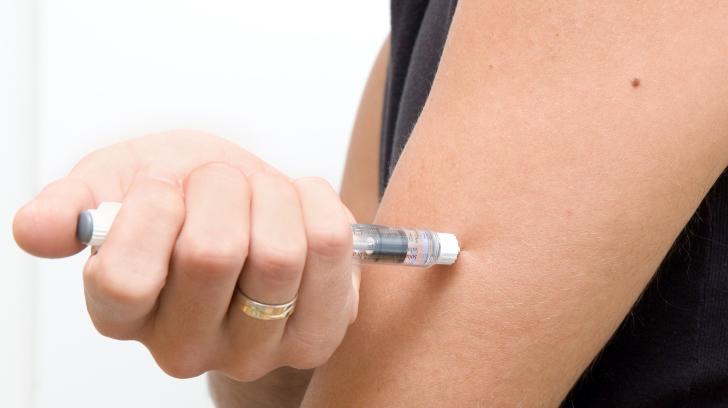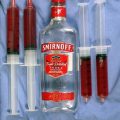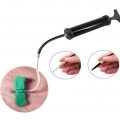Water is of major importance to all living things; in some organisms, up to 90% of their body weight comes from water. Up to 60% of the human adult body is water. According to H.H. Mitchell, Journal of Biological Chemistry 158, the brain and heart are composed of 73% water, and the lungs are about 83% water. The skin contains 64% water, muscles and kidneys are 79%, and even the bones are watery: 31%.
Each day humans must consume a certain amount of water to survive. Of course, this varies according to age and gender, and also by where someone lives. Generally, an adult male needs about 3 liters (3.2 quarts) per day while an adult female needs about 2.2 liters (2.3 quarts) per day. All of the water a person need does not have to come from drinking liquids, as some of this water is contained in the food we eat.
Water serves a number of essential functions to keep us all going
- A vital nutrient to the life of every cell acts first as a building material.
- It regulates our internal body temperature by sweating and respiration
- The carbohydrates and proteins that our bodies use as food are metabolized and transported by water in the bloodstream;
- It assists in flushing waste mainly through urination
- acts as a shock absorber for the brain, spinal cord, and fetus
- forms saliva
- lubricates joints
According to Dr. Jeffrey Utz, Neuroscience, pediatrics, Allegheny University, different people have different percentages of their bodies made up of water. Babies have the most, being born at about 78%. By one year of age, that amount drops to about 65%. In adult men, about 60% of their bodies are water. However, fat tissue does not have as much water as lean tissue. In adult women, fat makes up more of the body than men, so they have about 55% of their bodies made of water. Thus:
- Babies and kids have more water (as a percentage) than adults.
- Women have less water than men (as a percentage).
- People with more fatty tissue have less water than people with less fatty tissue (as a percentage).
There just wouldn’t be any you, me, or Fido the dog without the existence of an ample liquid water supply on Earth. The unique qualities and properties of water are what makes it so important and basic to life. The cells in our bodies are full of water. The excellent ability of water to dissolve so many substances allows our cells to use valuable nutrients, minerals, and chemicals in biological processes.
Water’s “stickiness” (from surface tension) plays a part in our body’s ability to transport these materials all through ourselves. The carbohydrates and proteins that our bodies use as food are metabolized and transported by water in the bloodstream. No less important is the ability of water to transport waste material out of our bodies.
The following tables give the average percentages and ranges of water in the body according to sex and age:
| Age 12–18 years | Age 19–50 years | Age 51 years and older | |
| Male | Average: 59% Range: 52–66% |
Average: 59% Range: 43–73% |
Average: 56% Range: 47–67% |
| Female | Average: 56% Range: 49–63% |
Average: 50% Range: 41–60% |
Average: 47% Range: 39–57% |
| Birth to 6 months | 6 months to 1 year | 1–12 years | |
| Infants and children | Average: 74% Range: 64–84% |
Average: 60% Range: 57–64% |
Average: 60% Range: 49–75% |
Body size, shape, and balance of muscle and fat can all affect the percentage of water in a person’s body.
What would happen if you inject water into your bloodstream?
If you inject water for injection, which has been properly produced and packaged so that it is Sterile and safe for injecting into the bloodstream then you will be absolutely fine. Small volumes (less than half a liter) won’t have a significant effect. 500ml is about 10% of your blood volume so will dilute each component of your blood (primarily the minerals and proteins) by 10%, dropping some measurements to a value a doctor would regard as abnormal, but sufficiently close to normal not to be immediately harmful. Within a few minutes, the water will redistribute in the extracellular and interstitial compartments and 500ml is only about 1% of that so changes in concentration will be correspondingly lower.
However, if you just inject tap water then you are putting yourself at massive risk. Tap water normally contains bacteria that can cause sepsis, and often times these bacteria are hard to treat as they are not sensitive to various antibiotics. You are also risking problems with other areas such as the effects of injecting a liquid with a possibly unstable pH – which can cause problems with the acidity of your blood and electrolytes.
What would happen if you injected a syringe full of water into your arm?
If you inject a syringe full of water into your arm intramuscularly, you would get a bump, depending on how much water you injected. The most common syringe used is one for insulin and allergy shots, and it holds 0.5 cc, which is more than enough to cause a noticeable bump. But there are larger ones (10 ccs and up), and those could actually cause injury to your body if you aren’t careful where you inject.
If you were unlucky and inject the water into a vein or artery, it can cause sepsis, a potentially life-threatening condition that occurs when the body’s response to an infection damages its own tissues. When the infection-fighting processes turn on the body, they cause organs to function poorly and abnormally. Sepsis may progress to septic shock. This is a dramatic drop in blood pressure that can lead to severe organ problems and death.






